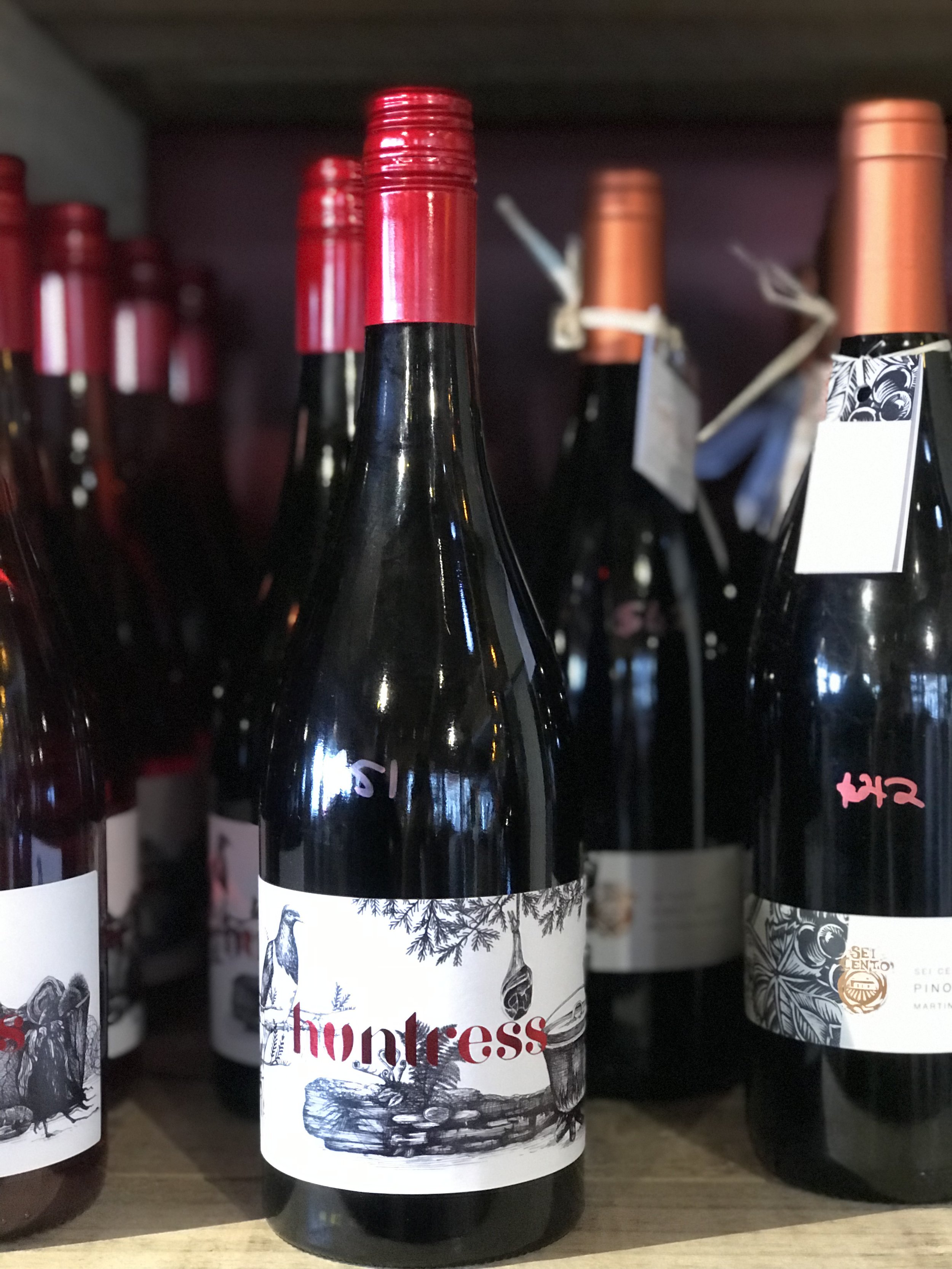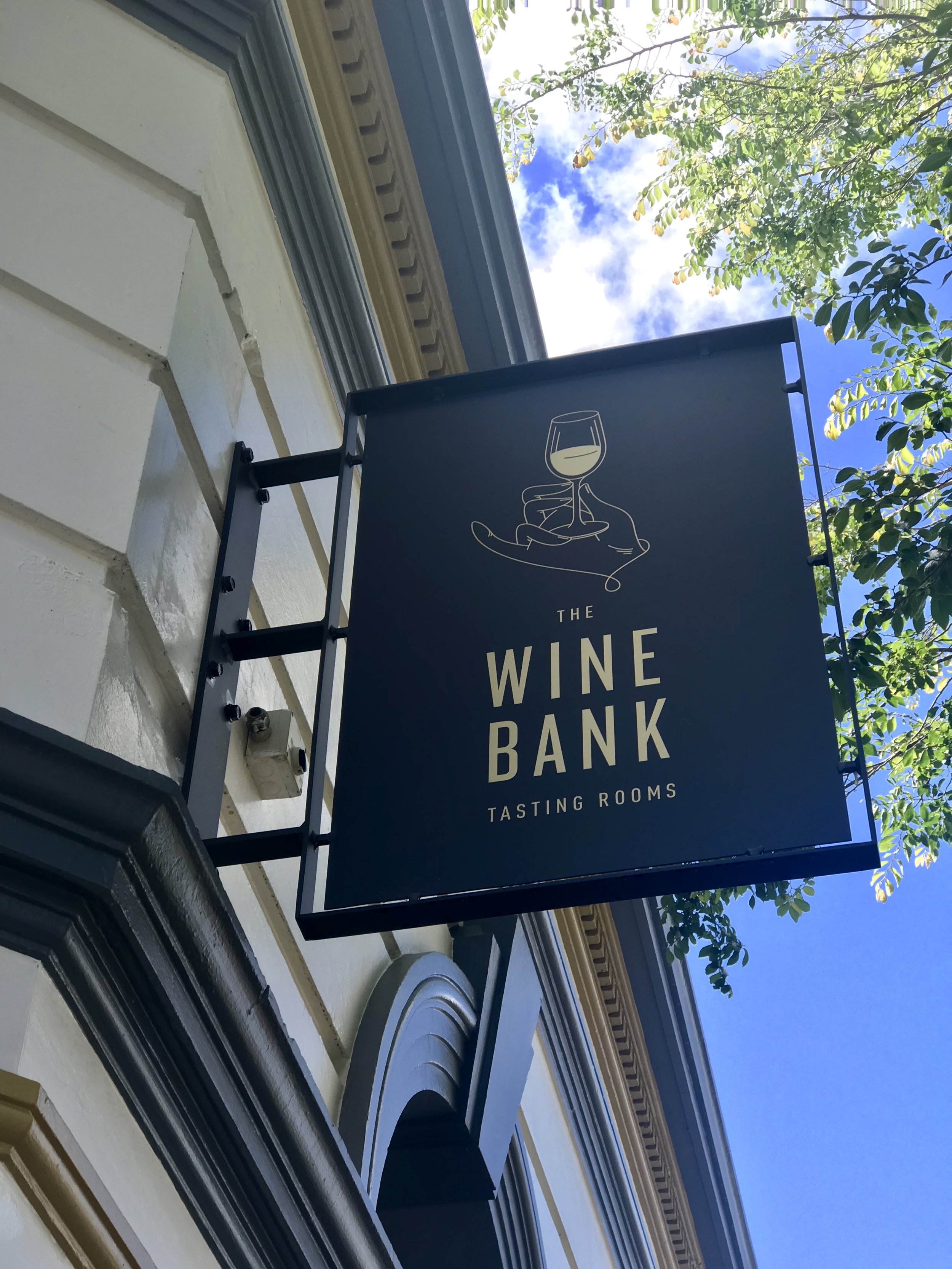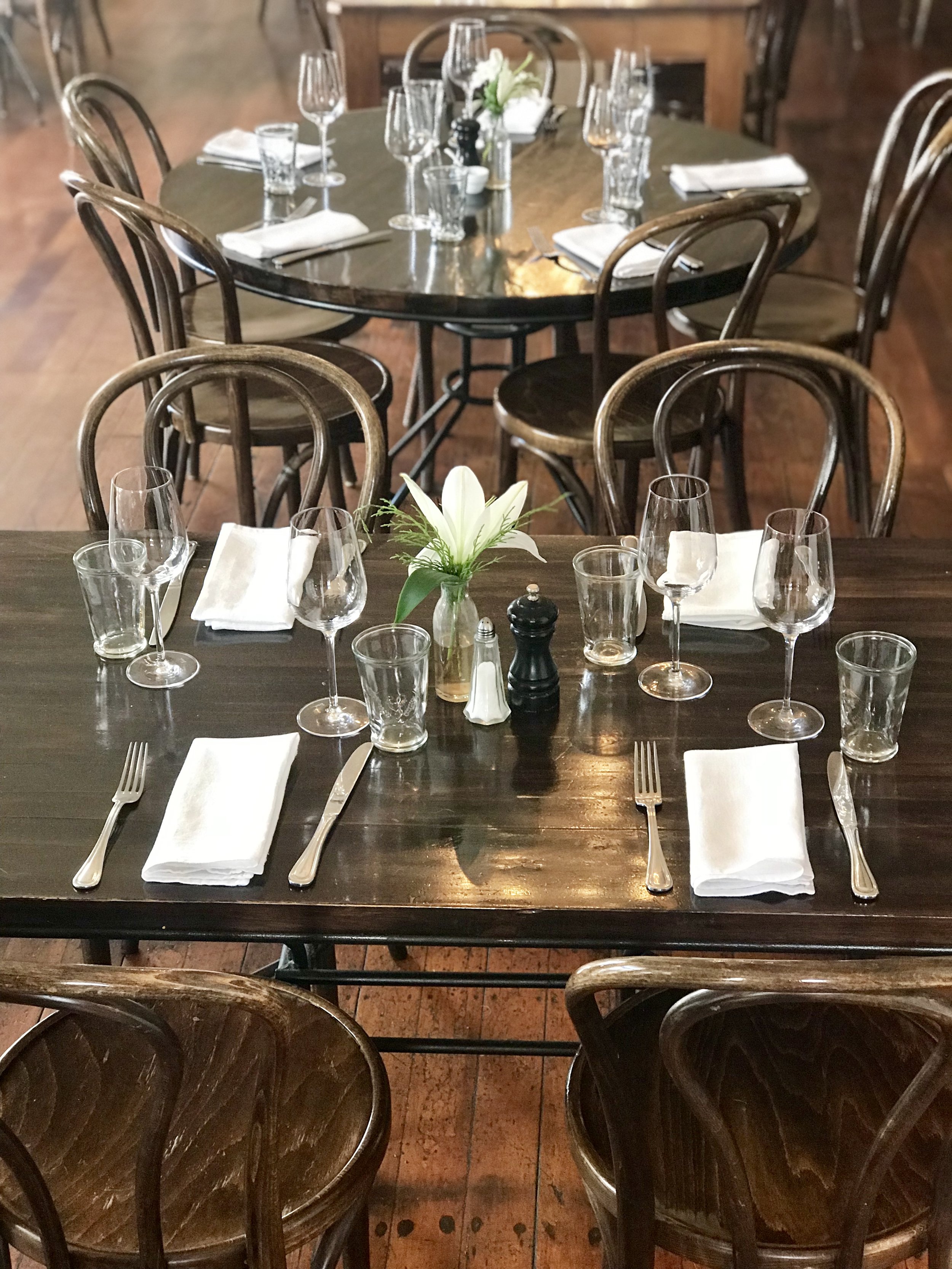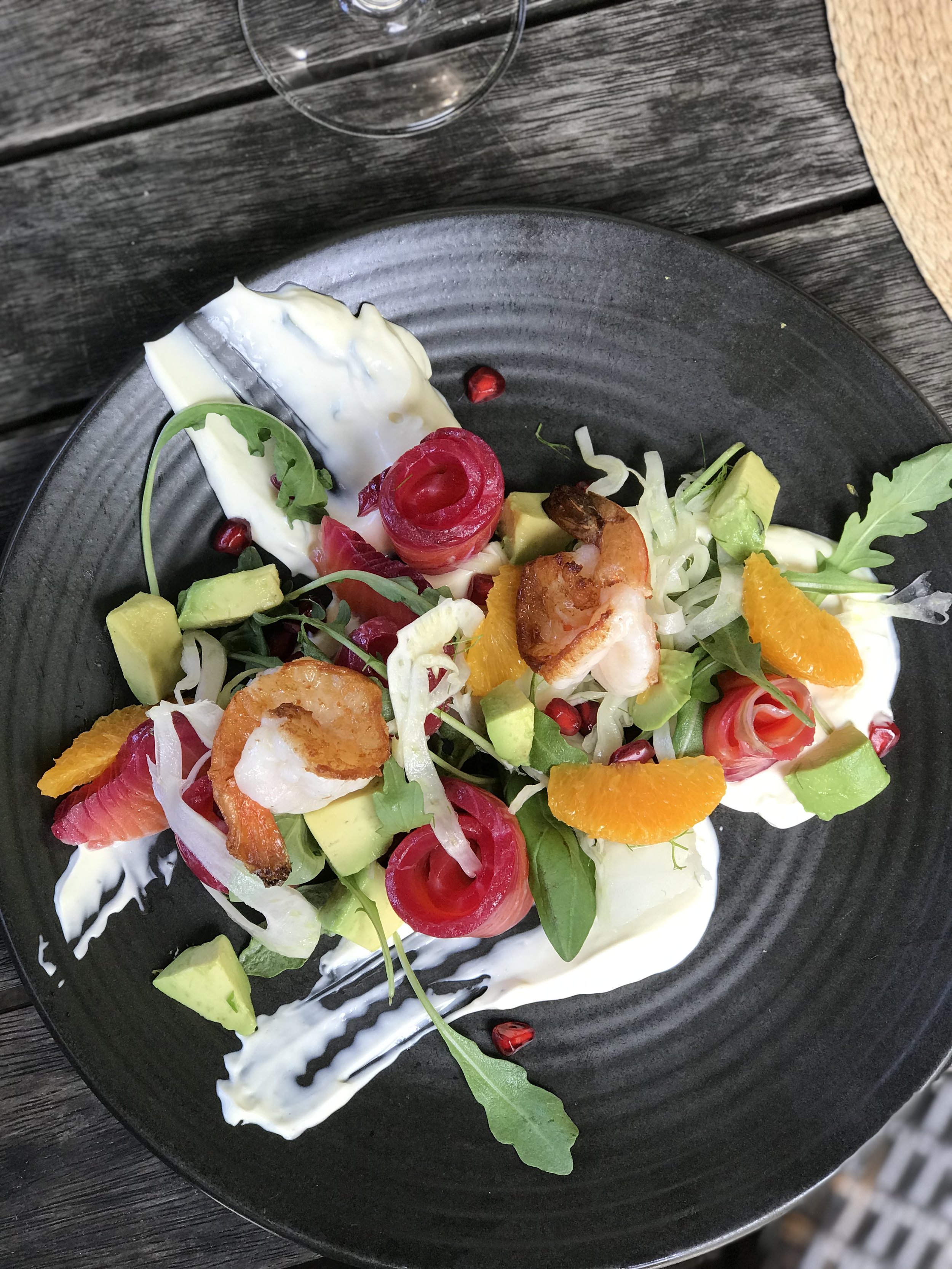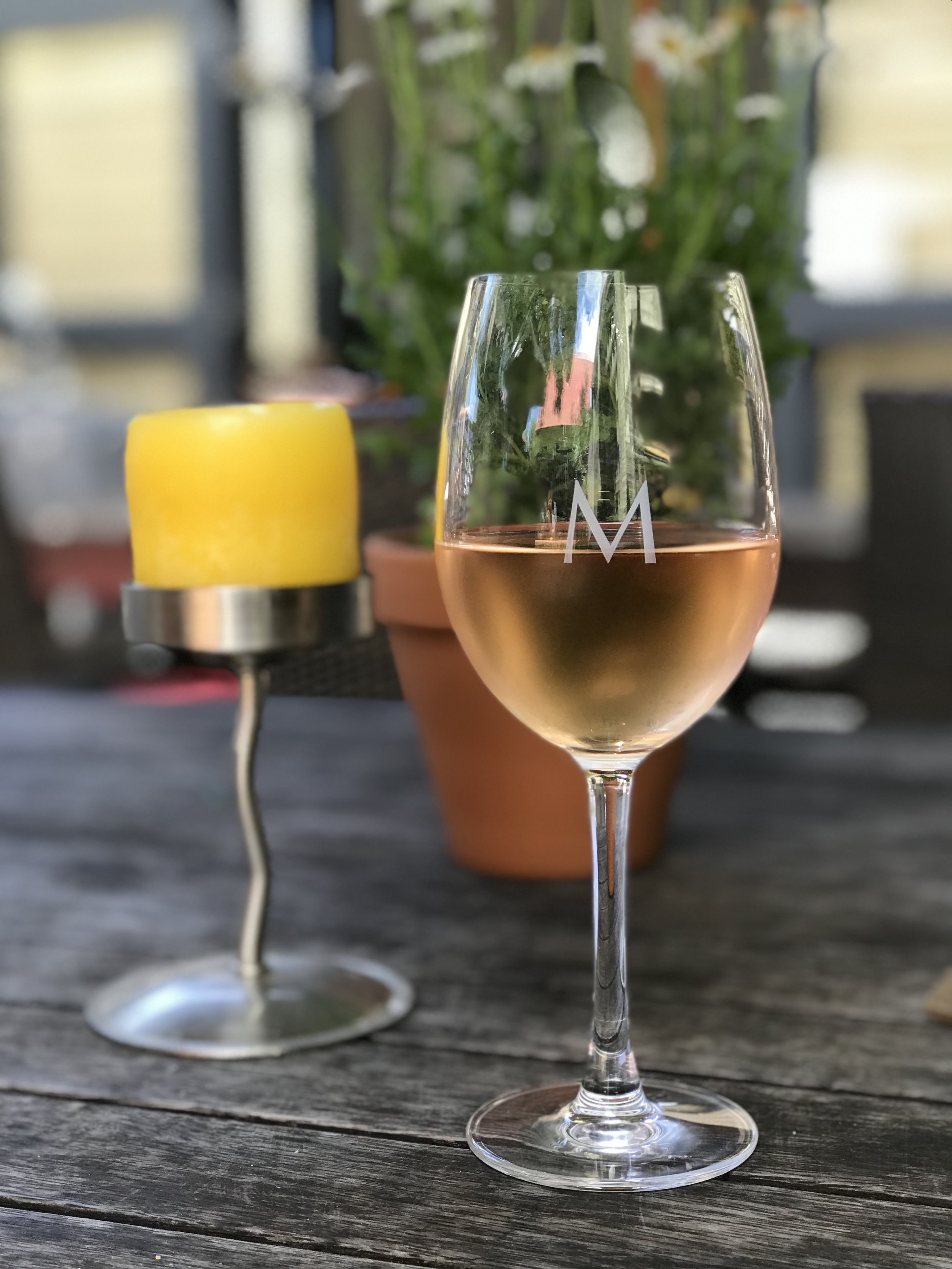Ripe for the picking: exploring the food and wine of New Zealand’s Wairarapa
Fast becoming world-renowned for its boutique pinot noir, New Zealand’s Wairarapa region is an oenophile’s dream destination
Chef Adam Newell calls "plate up" from across the busy kitchen.
Tonight, the Michelin-star chef will feed close to 250 people from around the globe in his popular Union Square Bistro, which opened in May 2018. Originally from Cornwall, England, but based in New Zealand since 1997, Newell describes his menu as locally sourced, seasonal and uncomplicated.
A mushroom grower popped in this week, Newell tells me when we catch up at his restaurant on a sunny Saturday morning.
“I’d never met him before. But, of course, I said, ‘yes, please’—and incorporated his oyster mushrooms into the risotto you see on the menu. We have an open-door policy here to encourage small players to work with us. The quality of their food is really out of this world; it’s always fresh, invariably grass fed and, mostly if not always, organic. All our veges, herbs, lamb and fish are sourced this way.”
Newell knows his stuff. With a resume that includes stints at London’s five-star Claridge’s Hotel, the three-star Le Gavroche, working under the Roux Brothers and the Fulham Road Restaurant in London (where he was awarded his Michelin star), he’s been on the international restaurant scene since graduating from Plymouth College in England in 1983.
He and his wife, Nicola, have managed restaurants in Auckland and Wellington, running Wellington’s Zibibbo for 19 years. They moved permanently to the Wairarapa in 2014.
“I’d say the Wairarapa wine and food scene is like a ‘little Provence,’” he explains, sipping on a glass of sparkling mineral water. (He stocks New Zealand’s Middle Earth brand, which references Sir Peter Jackson’s Lord of the Rings movie trilogy. The film director is a Wairarapa local, and scenes from the movie were filmed nearby.)
“The climate and soil produce really amazing wine. The food is fresh—you know exactly where it’s from and who produced it. And it’s simple. You won’t find a lot of foams and gels in the cuisine. Right now, there’s a real buzz about the place,” says Newell.
The Newells, based at Riversdale Beach on the Wairarapa’s south coast, run the bistro, a recently opened boulangerie (also in Martinborough) and an orchard of 3,500 olive trees in Gladstone. By 2020, they’ll add a Martinborough-based “chippery” to the list, bringing dishes such as potato fritters (a Kiwi favorite) and sushi to the village.
“People are catching on to what’s on offer here. In Martinborough, the main wine village, you can walk to everything—all the galleries, shops, eateries and wineries. We’ve got this friendly small-town culture where everyone knows each other, and this village and the surrounding region is just beautiful.
Big skies, huge country vistas, small boutique wineries and lots of passionate food makers. To me, it’s a bit like Napa Valley’s Yountville was 10 years ago. I just love it,” says Newell.
Wairarapa, New Zealand (image by Jacqui Gibson).
A CULINARY GEM
New Zealand’s Wairarapa (meaning “glistening water” in the language of the Māori, the indigenous people of New Zealand) is a pastoral region about 80 miles long by 40 miles wide. Bordered by the sea to the south and east and flanked by the Remutaka and Tararua Ranges to the west, the region’s contrasting lowlands and rivers provide an overwhelming sense of space.
Martinborough may be the main wine village of the Wairarapa, but its population is only around 1,600. There are around 40,000 people in the Wairarapa, spread among Martinborough and other small towns such as Masterton, Featherston, Greytown and Carterton.
Compared with better-known wine and food districts in New Zealand—think Marlborough, home of New Zealand’s world-class sauvignon blanc—the Wairarapa is still flying under the radar as far as tourists are concerned.
“It’s extraordinary really,” says winemaker Lance Redgwell, sitting on the front porch of his small organic vineyard, Cambridge Road, with his pug, Chester, at his feet.
A winemaker for more than a decade, Redgwell started out perfecting classic-style syrah and pinot noir, the region’s signature wines. Later, he moved into natural and raw wines such as The Naturalist, his pétillant naturel, a delightfully fizzy number that combines riesling, pinot gris, chardonnay, pinot noir and pinot meunier.
“To me, this is the food and wine region to visit. You’ve got really skilled vintners here, making small-batch wine they deeply care about. Much of New Zealand’s award-winning olive oil is coming out of here. There’s a lot of small-scale producers—cheese makers; growers; pork, beef and sheep farmers. And it’s very low-key. What more reason do you need to visit?”
With that endorsement in mind, we’ve handpicked a selection of wine and food must-do’s that reflect the best of Wairarapa’s local cuisine.
CHEESE
Traveling to the Wairarapa from Wellington, your first stop should be C’est Cheese in Featherston. Owned (and built) by talented cheesemaker Paul Broughton, the store houses one of the most extensive New Zealand cheese selections you’ll find.
Here, you can try everything from a Kerikeri Edam to a Masterton Havarti or pecorino. Goat cheese lovers shouldn’t pass up The Drunken Nanny’s award-winning Fresh Lush Goat Cheese, made just up the road in Martinborough.
“I tell people to buy a few local cheeses and grab some freshly made bread from the baker around the corner—you honestly won’t find a more delicious ciabatta anywhere—then go and park up by the river for a picnic. You’ll probably meet a few local farmers taking a dip. It’s the perfect introduction to life in the Wairarapa,” says Broughton.
Alternatively, you can join Broughton in his state-of-the-art cheese factory (next door to the shop) for a cheese tasting or to sample specialty cheese dishes such as grilled cheese sandwiches, mac and cheese, and poutine.
Under Broughton’s new Remutaka Pass Creamery brand, he’s also producing locally roasted coffee, so order a café latte made with organic Te Pare Farm cow’s milk while you’re there. (Though, keep in mind, Kiwis like their coffee strong, and most often, a latte will come with a with a double shot of espresso).
C’est Cheese, Featherston, Wairarapa (image by Jacqui Gibson).
WINE
The region’s flagship wine is pinot noir. Most agree that modern winemaking began in the region in the 1980s, with the setup of iconic wineries such as Ata Rangi by local pioneer Clive Paton. The earliest winemaking attempts, however, date back to the 19th century when settler William Beetham made wine on family land in Masterton after his French wife, Hermance, planted vines.
Today, you can expect a richly flavored, warm, textured pinot noir with a savory undercurrent and perfumed character. Many other wines are produced in the region as well, including pinot gris, chardonnay and syrah.
With an estimated 100 producers spread across the Wairarapa’s three subregions of Martinborough, Gladstone and Masterton, it can be difficult to know where to start. Martinborough Wine Merchants is a good bet.
Talk to owner Tanya Cowen about the local wine (she’s worked in many Martinborough vineyards) and her “off-road” wine tour that begins at the store. “Setting up this tour was easy,” she says. “We literally walk from vineyard to vineyard talking to our friends, the winemakers, drinking from their cellars as we go.”
Martinborough’s new Wine Bank is another great stop to sample local wines from temperature-controlled, Italian-made, self- service wine dispensers. For a winery lunch, try Luna Estate or Tirohana Estate on Puruatanga Road. For cellar-door wine tastings, where you visit a winery to sample a selection of their best wines, Palliser Estate, Cambridge Road and Martinborough Vineyard are all excellent options within easy walking distance of Martinborough village.
ARTISAN FOODS
The Wairarapa is fast gaining a reputation for high-quality olive oil. Local producers took 10 of the 14 Best in Class awards at the 2018 New Zealand Extra Virgin Olive Oil Awards, with three local producers qualifying for the international awards this year. For starters, try Loopline Olives’ award-winning picholine and picual. You’ll see it on the shelves of food stores and in restaurants throughout the Wairarapa.
If you’re interested in plant-based eating, try Food Forest Organics on Main Street in Greytown. Owned by Suzy Amis Cameron, a former model and Hollywood star married to director James Cameron, the store and café sells produce such as premium manuka honey and hemp seed and flax seed oil sourced from their 12,000-acre farm. Go for lunch to enjoy homemade salads made from Suzy’s fresh organic veges. Finish with their signature cashew nut cheese cake or a healthful green smoothie.
On the same road north, on the outskirts of Carterton, is local favorite The Clareville Bakery. You can’t pass up its lamb cutlet and kumara pie, which garnered the country’s supreme pie award a few years back. (New Zealand pies are handheld savory pies, not sweet pies like in the U.S.) Set in a historic church, the award-winning bakery has a sit-down café as well as takeout. Drop in for a sourdough loaf, or grab a table for a hot sandwich or a Clareville salad of greens, cucumber, feta, caramel walnuts and cherry tomatoes served with an orange dressing.
Cambridge Road vineyard, Martinborough, Wairarapa (image by Jacqui Gibson).
GIN
While pinot noir is the drink of choice in much of the Wairarapa, the region is also home to two gin producers and a growing fanbase of the Dutch spirit. (The Martinborough Gin Club congregates at Martinborough Wine Merchants every Thursday, with newcomers and drop-ins welcome). Lighthouse Gin, named after the lighthouse at nearby Cape Palliser, is made by distiller Rachel Hall from a blend of botanicals such as New Zealand navel oranges and spring water from the Remutaka ranges.
Reid + Reid Distillery, on the other hand, combines Kiwi botanicals such as kawakawa, manuka and horopito with classic gin botanicals to create a distinctive New Zealand gin in three forms: native, barrel-aged, and Reverend Dawson’s (named after one of the country’s leading prohibitionists and the great-great-grandfather of makers Stewart and Chris Reid).
Buy either gin from Martinborough’s Wine Merchants, or duck into Martinborough’s Mesita wine bar to sample a Reid + Reid negroni.
GOURMET EATS
Union Square Bistro in Martinborough is just one of several restaurants where the farm-to-table philosophy runs strong. At Wharekauhau Country Estate, a luxury lodge owned by California billionaire William P. Folley II, executive chef Marc Soper sources ingredients locally wherever possible. Lamb comes straight from the farm, fennel from the coast and herbs from the garden, he says.
Wherever you dine, Newell recommends pairing your dish with one of the region’s outstanding pinot noirs.
“It’s this wonderful wine that put us on the map 30 years ago. It’s central to the Wairarapa’s identity and the reason so many foodies and chefs like me are gravitating to the region. Better still, to taste this wine you have to be here. It’s not easy to get hold of through the usual outlets,” he says.
“Come here and taste it for yourself: you’ll see this wine is part of how we live—it’s shared between neighbors, dished out at local community events and proudly enjoyed at all our best cafés and restaurants.”
This story was first published in AAA Traveler Worldwise magazine for a US audience.

